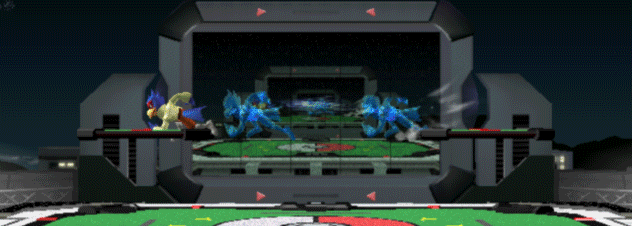Welcome Back! In this post I will be going over ledge-canceling; a tech present in all smash games in one form or another. So let’s get started.
What is it?
a ledge-cancel is the act of sliding off a platform or the stage to cancel the ending lag of a certain move. This, while it looks amazing, is many functionalities and is widely used in high-level play. Let me show some examples.

This Gif shows what an edge-cancel looks like. As soon as Falco leaves the platform, he can preform another side-b due to the lack of end-lag. The use of Fox’s and Falco’s side b’s is one of the most popular uses of ledge-cancels, as they can help a player move across the sage quickly and relatively unexpectedly and, if preformed correctly, they will immediately begin to act out of their side b. This will allow for easy follow-ups or a quick punish if your opponent isn’t expecting it. Also with Falco’s and Fox’s side b is the recovery aspect. If you can successfully recover with this move and ledge-cancel it, you will be on stage without any end-lag, one of the best possible ways to recover.

This gif shows some potential uses for Pikachu. With Pikachu’s up b move you can move vertically, horizontally, or diagonally, allowing for more movement than Falco and Fox’s side b. This can allow for set-ups for more combo potential or a quick hit to serve two purposes: to add on some extra percent and to mindgame your opponent. Melee is often credited to be a mental game more than anything: that is, being good at the game isn’t enough. I won’t go too in depth, as that would be a great topic for a future post!

This last example shows Jigglypuff ledge-canceling a bair into a rest. This shows that ledge-canceling can be used offensively as well as defensively or passively. This all around tech is a must have for any aspiring player.
Thank you all so much for reading, until next time!


